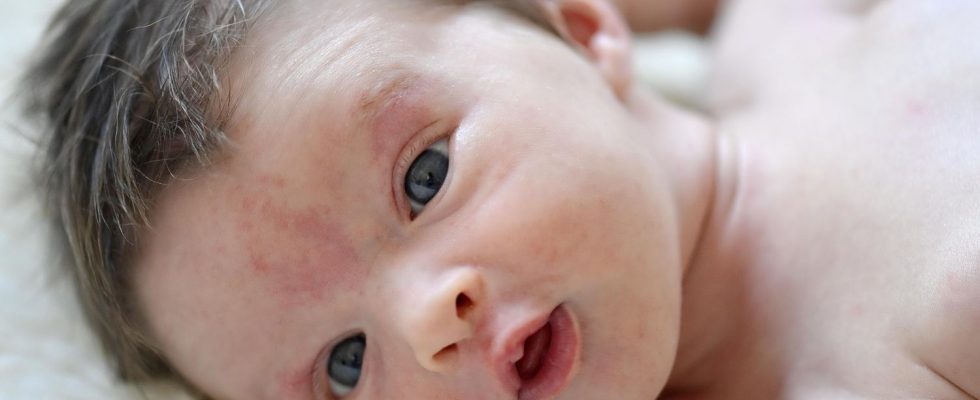An American team presents an ultra-accelerated protocol for treating “wine stains” in infants, using pulsed dye laser sessions. If this technology is the right one, the rationale of this protocol is doubtful, according to Dr Virginie Fayard, one of the French pioneers of this treatment.

Published
Reading time: 2 min

Discovering a “wine stain” or red spot on their newborn’s skin is always a little worrying for parents. Géraldine Zamansky, journalist for the Health Magazine on France 5, discusses the new protocol for the early treatment of these infants, presented by an American team.
franceinfo: Are there already solutions to reduce these wine stains which are brought to light by an American study this week?
Geraldine Zamansky: Quite. It is possible to reduce these “wine stains”, in popular language, which appear on the face or body of infants from birth, or just after. Their color varies but these “flat angiomas” in medical terms owe their nickname to their often dark appearance, between burgundy and purple. It’s about a malformation very small vessels located on the surface of the skin which are too numerous.
An American team published this week the spectacular results of a treatment in 8 weekly laser sessions, in the JAMA Dermatology. But French experts alerted me in particular to the very small group of patients treated and the brevity of their follow-up. It is therefore better to avoid creating false hopes with this express protocol.
This remains an excellent opportunity of talk about there true answer brought by there technology used, the pulsed color laser, supported by Health Insurance for this problem.
Is it “our” protocol in France which is therefore at a less accelerated pace?
Yes, Dr. Virginie Fayard, one of the pioneers in the use of this laser more than 30 years ago, explained to me how its very principle requires waiting more than a week between two sessions. Indeed, its beam of light targets the red hemoglobin present in the blood. The heat created causes the small abnormal vessels to clot.
And this very superficial hematoma then takes on average around ten days to resolve… The skin must be given time to regenerate. In France, after the first birthday, Health Insurance also conditions reimbursement to 3 months of waiting.
But the ideal is to start well before the first candle?
Dr Fayard told me that treatment can start from the first month. If this improves efficiency, it is still possible to act later. With, of course, adapted pain protocols. After 2 or 3 sessions, the results often reassure parents. But be careful, it is impossible to guarantee complete disappearance of the stain, insists the specialist. It depends on its location for example. And sometimes there’s a little resurgence years later.
The challenge is therefore to find experts whose bill is close to the reimbursed rates, because few hospitals offer this treatment. Networks created for rare skin diseases can facilitate this research.
The study
“Resource” site
